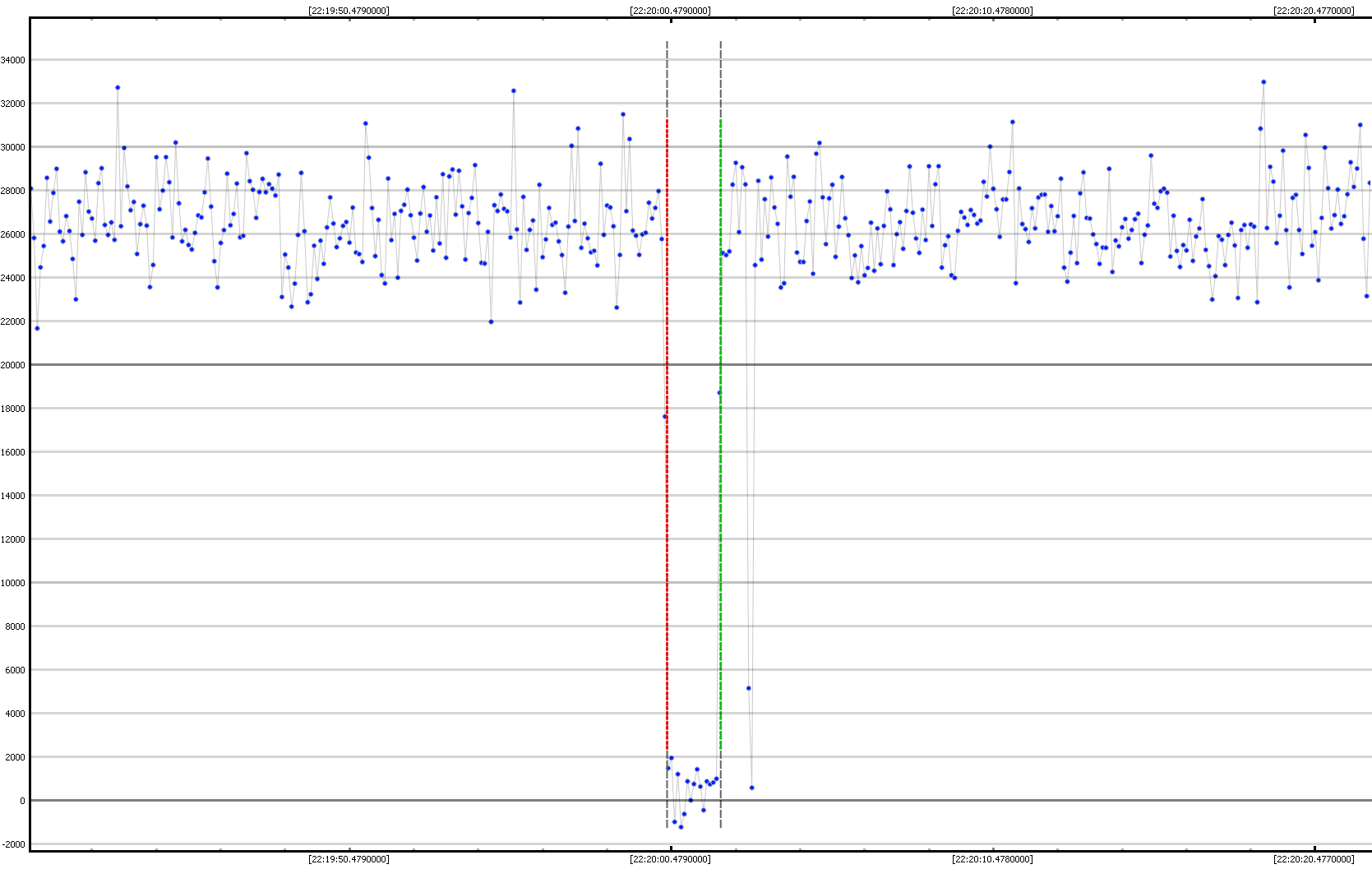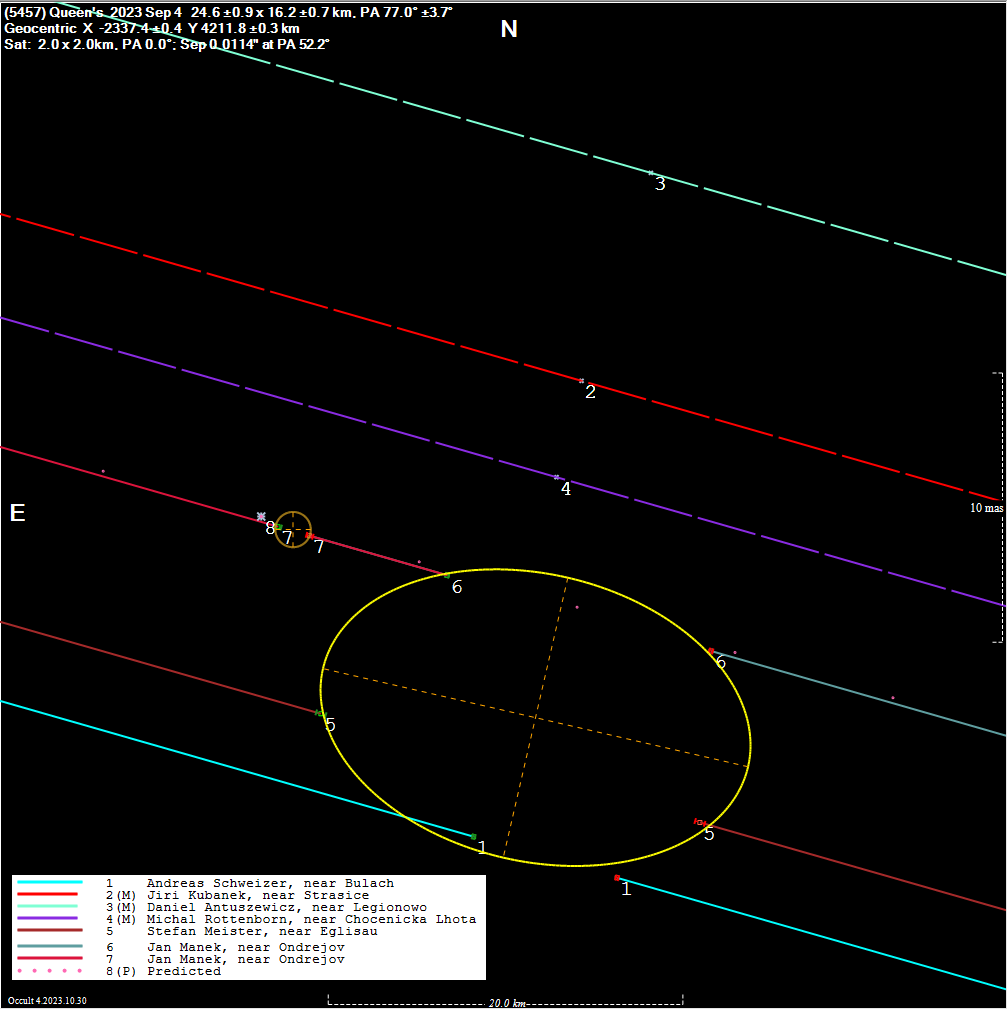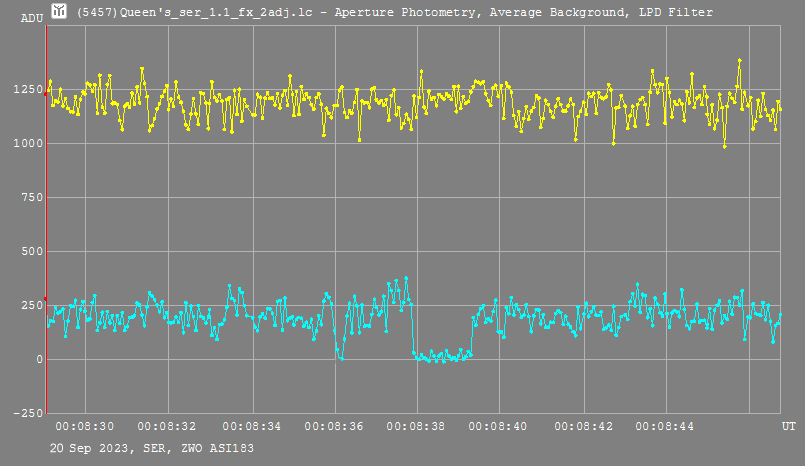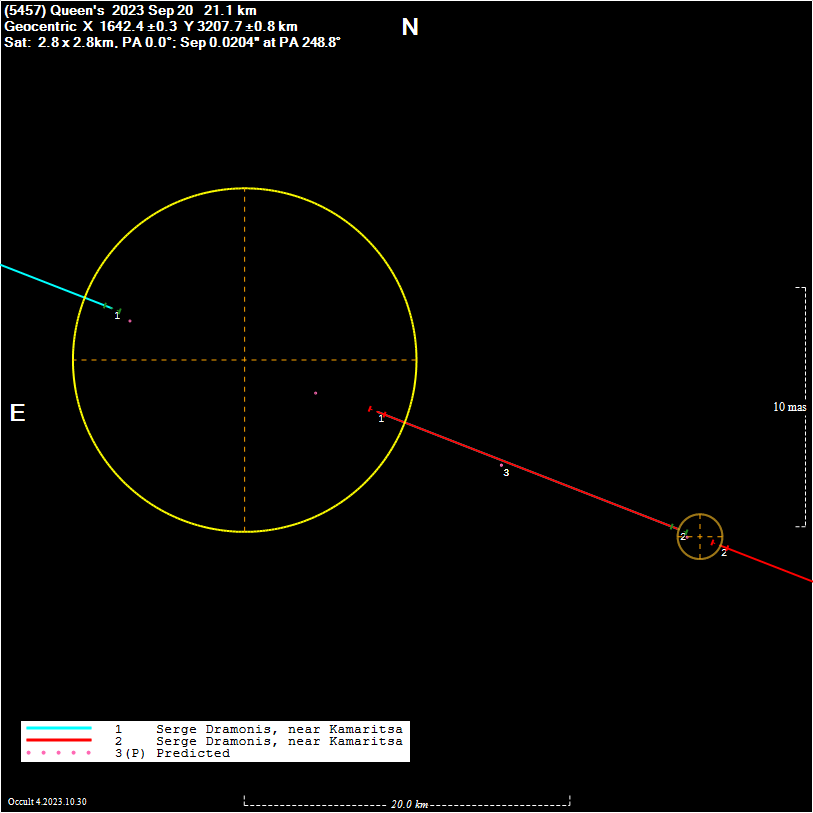Satellite of Asteroid (5457) Queen's Discovered
For the first time, an asteroid moon has been discovered from an European site using "Citizen Science".
Jan Mánek, (IOTA/ES, Czech Astronomical Society) discovered a satellite of the asteroid (5457) Queen's during an observation of a stellar occultation in the Czech Republic on 2023 September 04.
This discovery was confirmed on 2023 September 20 by an observation by Serge Dramonis in Greece. The Central Bureau for Astronomical Telegrams of the International Astronomical Union (IAU) has published the discovery on 2023 November 16:
http://www.cbat.eps.harvard.edu/iau/cbet/005300/CBET005318.txt
The Discovery on 2023 Sep 04
Jan Mánek observed an occultation with a duration of 1.67 s by the asteroid (5457) Queen's. After 0.87 s, the star G2750746718513211520 (Gmag 12.45 mag) in the constellation Pisces was occulted a second time for 0.20 seconds. For the observation Jan Mánek used a 0.35m Newtonian and a DVTI+Cam 430.
Figure 1. The recorded light curve of the occultation by asteroid (5457) Queen's on 2023 Sep 4. Note the short light drop caused by the shadow of the satellite. Analysis was made with Bob Anderson’s PyOTE. (J. Mánek, IOTA/ES)
Other members of IOTA/ES observed the event as well. Stefan Meister and Andreas Schweizer in Switzerland were also able to measure the occultation by the asteroid but there was no detection of the satellite at their stations. The asteroid's shadow missed three other stations by Jiří Kubánek and Michal Rottenborn in the Czech Republic and Daniel Antuszewicz in Poland.
This was the first time that an occultation by this asteroid was observed.
Dr Christian Weber from the SODIS team of IOTA/ES evaluated the observations and determined a shadow profile of 24.6 km (+/- 0.9 km) x 16.2 km (+/-0.7 km) for the asteroid and a diameter of 2 km (+/- 0.2 km) for the satellite.
Figure 2. Shadow profile of the asteroid and the satellite. Chord No. 8 represents the predicted centre line of the occultation. There is a path shift of approx. 10 kilometres to the south compared to the prediction. (C. Weber, D. Herald, Occult V4, IOTA/ES)
Confirmation of the Discovery on 2023 September 20
On September 20th, the asteroid once again occulted a star in the constellation of Pisces. Serge Dramonis in Greece was able to measure a 0.21-second occultation of the star G2749281138232702080 (Gmag 13.08) by the suspected satellite before the asteroid (5457) Queen's itself occulted the star for 1.43 seconds. He used a 0.4-m Newtonian with an ASI 183 MM camera and GPS time for his observation.
Figure 3. Recorded light curve of the occultation on 2023 Sep 20 by Serge Dramonis. Note the short drop before the occultation of the asteroid. Analysis was made with Hristo Pavlov’s Tangra. (S. Dramonis, SODIS)
Dr Christian Weber's analysis of this measurement revealed minimum diameters of 17.5 kilometres (+/- 0.5 km) for the asteroid and 2.8 kilometres (+/-0.5 km) for the satellite.
Figure 4. Only a single chord was recorded during the occultation by asteroid (5457) Queen's on 2023 Sep 20. Serge Dramonis’ station was located near the predicted centre line (chord No. 3) and was able to confirm the discovery.
(C. Weber, D. Herald, Occult V4, IOTA/ES)
Service for the Media:
Downloads:
Pressemappe (Deutsch):
Citizen Science - Mond des Asteroiden (5457) Queen’s entdeckt
Press Kit (English):
Citizen Science - Satellite of Asteroid (5457) Queen's discovered




